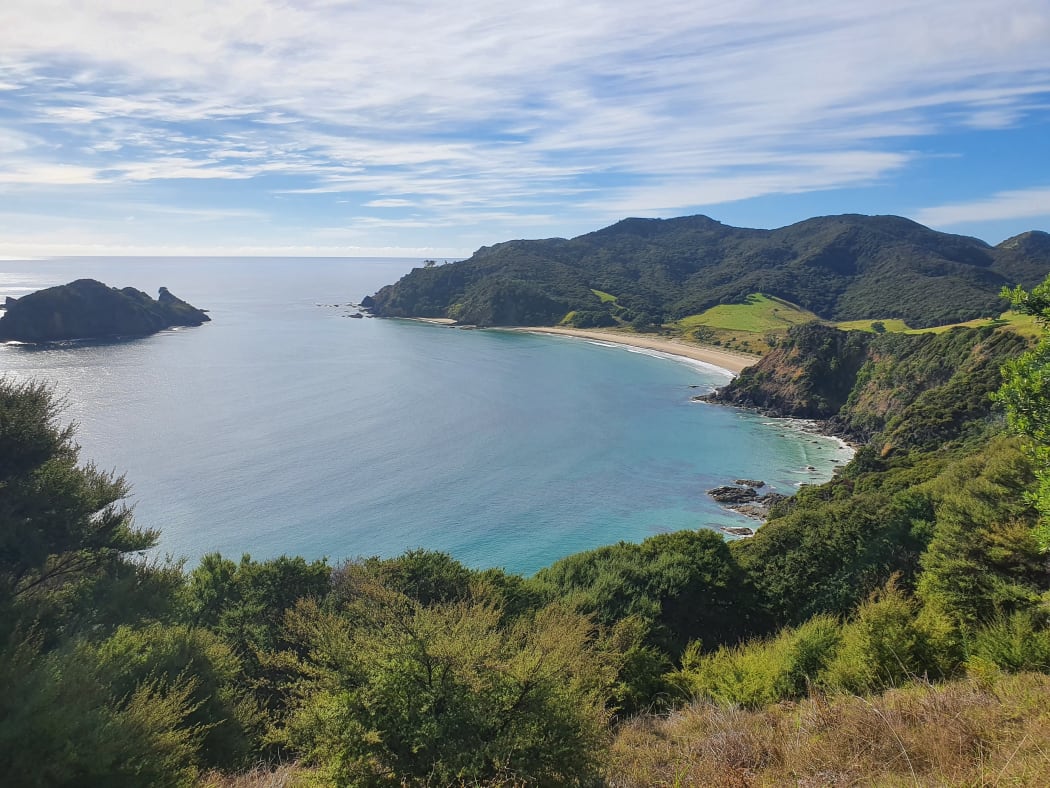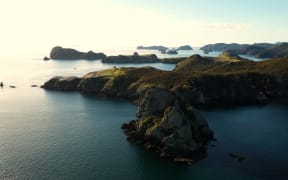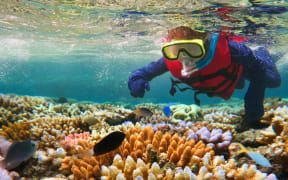Heritage New Zealand wants helipad planners to consider the wealth of archaeological sites on Aotea Great Barrier Island.

Aotea Great Barrier Island Photo: RNZ/Carol Stiles
Six helicopter landing sites are proposed - two of them have been approved already - and most of them are near or on archaeological sites (most Māori, a couple pre-1900 European).
One is near an urupā and site of a significant battle between Māori at Waitematuku/Medlands Beach.
This proposed helipad "does not require any land disturbance, would not result in any accidental discoveries, and would not affect any cultural heritage values", a planning consultant said, echoing other environmental assessments accompanying the five recent applications for resource consent for helipads.
At least 800 archaeological sites on the island are identified in Auckland Council's Cultural Heritage Inventory and the Archaeological Association's database, Pouhere Taonga / Heritage NZ said.
"This is an area of significant archaeological sensitivity," said mid-northern area manager Bev Parslow.
But the council has failed so far to correct the island's poor planning protection for historic heritage.
Three years ago a council report said it was "inadequate and falls well short of that in other parts of the region".
"No Māori heritage sites on Aotea Great Barrier are protected by scheduling," it said, expressing mystification why even the few schedules that were in place three decades ago, did not survive the transition into the Hauraki Gulf Islands Plan.
Mana whenua want an overhaul of planning rules to allow them more say - but that looks unlikely till 2026 - and a suspension of consent processing on Aotea in the meantime - but the council rejects that as illegal.
The council told RNZ it was working with locals to add culturally significant sites regionwide into current plans, but as things stand hapū have little say on the helipads.
Parslow said all archaeological sites were protected by law, whether recorded or not.
"It is illegal to modify or destroy an archaeological site without an archaeological authority from Heritage New Zealand Pouhere Taonga," she said in a statement.
Even where there were no earthworks, they'd like to be involved, she said.
"Our preference is to talk with stakeholders as early as possible with projects like these to ensure that the archaeological authority process is factored into any planning, and if possible to explore possible options that may avoid archaeological sites altogether and save applicants time and money."
The six helipads are covered by five resource consent applications - with four on a short stretch along Greenside Rd at Medlands, and the two approved at Gray Rd to the west.
The consultants' assessments all say no earthworks are needed, and several say stormwater runoff won't be affected as the helicopters land on the grass.
On a 7ha block at 101 Greenside Rd, archaeological investigation had found middens, and there were various Pa sites, pits, terraces, middens, and stonework on surrounding land, the consultant told the Auckland Council.
But the urupā was by the beach and "no cultural heritage features have been identified in the area of the site where the helipad is proposed to be located".
"In any case, the proposal does not require any land disturbance, would not result in any accidental discoveries, and would not affect any cultural heritage values."
That echoes other helipad assessments.
On a 19ha property at Gray Rd, though four cultural features - shell middens, stonework and an old European campsite - had been identified, consultant Isle Land Ltd said "the proposed helicopter operations would not affect archaeological or cultural heritage values".
It did not need earthworks, construction activities or other physical works.
That consent was granted.
The Great Barrier Island Strategic Management Area states an objective to "provide for the economic, social and cultural wellbeing of the Great Barrier community while ensuring the protection of the historic heritage, natural character of the landscape, the natural features, ecosystems and visual amenity of the island".
This includes to provide for "the use of ancestral lands by Ngati Rehua and acknowledging the relationship between Ngati Rehua and water, sites, waahi tapu and other taonga".
For a helipad proposed at 61 Greenside Rd, a consultant said it did not breach any rules and "would therefore help to provide for the economic, social and cultural wellbeing of the Great Barrier community while causing less than minor adverse effects upon the historic heritage, natural character of the landscape, the natural features, ecosystems and visual amenity of the island".
Isle Land and NKL Planning both declined to comment to RNZ.
Helipad applicants have not been forthcoming; one question is why they want a helipad when Claris airport's landing pad is just a few kilometres away.





